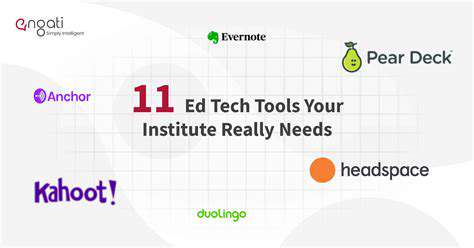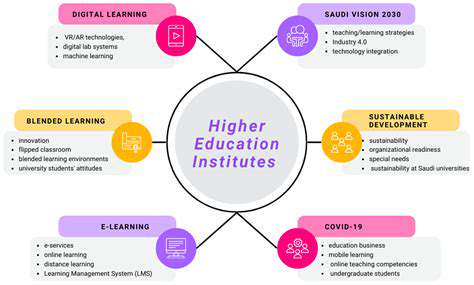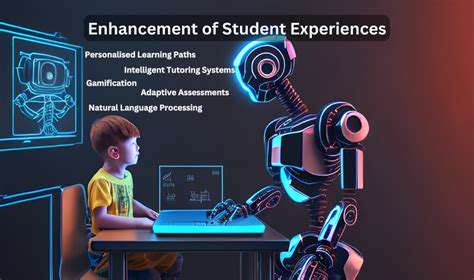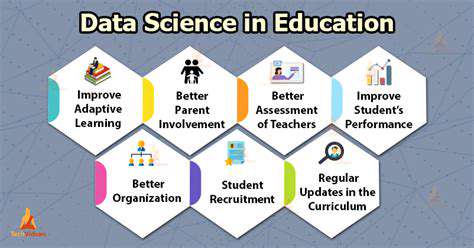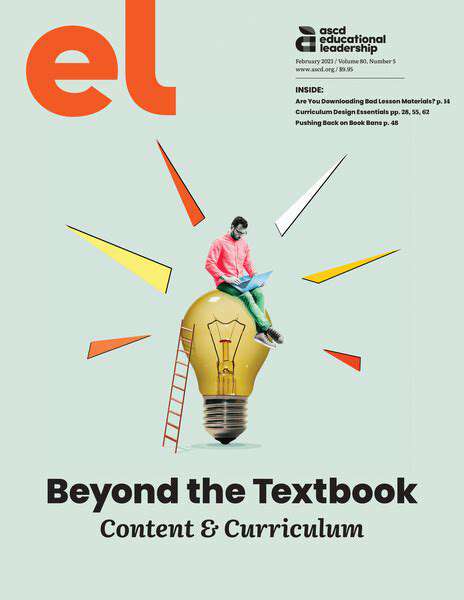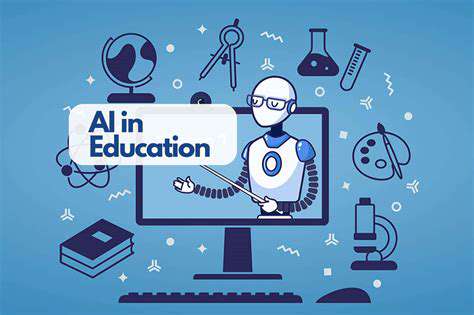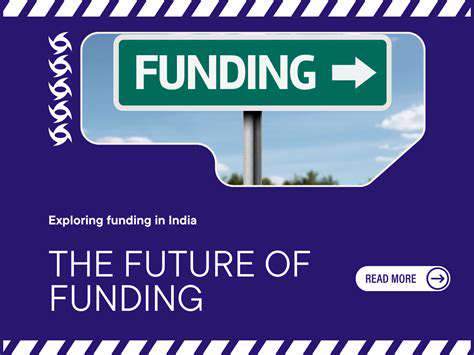Assessing Learning Outcomes in Blended Environments
Defining Learning Outcomes in Blended Learning Contexts

Defining Learning Outcomes for Effective Learning
Clearly defined learning outcomes are crucial for effective learning experiences. They provide a roadmap for both the learner and the instructor, ensuring that the learning process is focused and purposeful. When learning outcomes are well-articulated, learners understand precisely what they should know and be able to do after completing the learning activity. This clarity promotes active engagement and facilitates the assessment of learning effectiveness.
Alignment with Course Objectives
Learning outcomes should be directly aligned with the overall objectives of the course or program. This ensures that individual learning experiences contribute meaningfully to the broader educational goals. A strong connection between learning outcomes and course objectives creates a coherent learning pathway, fostering a deeper understanding of the subject matter. This alignment also helps instructors to design activities and assessments that truly measure student progress towards the desired learning outcomes.
Measurable and Observable Criteria
Effective learning outcomes are measurable and observable. This means that there should be specific criteria that allow for the assessment of whether the learning objectives have been met. Defining measurable criteria ensures that the evaluation of learning is objective and reliable. For example, instead of a general outcome like understand history, a more precise outcome might be analyze the causes of the American Revolution. This specific outcome is both measurable and observable.
Specific and Achievable Targets
Learning outcomes should be specific and achievable within the given timeframe. Vague or overly broad learning outcomes can lead to confusion and frustration for both the learner and the instructor. Concrete learning outcomes provide a clear target for learning, motivating learners and helping instructors to design appropriate activities. For example, instead of a general outcome like understand the principles of finance, a specific outcome might be calculate the present value of an investment with a given interest rate. This specific learning outcome makes the target achievable.
Action-Oriented Verbs
Using action-oriented verbs in learning outcomes is critical. These verbs clearly indicate the skills or knowledge that learners are expected to demonstrate. Examples of action-oriented verbs include analyze, compare, create, evaluate, explain, interpret, predict, and solve. These verbs help to define the specific actions learners will need to perform to demonstrate their understanding. Including these action-oriented verbs in learning outcomes makes the desired learning outcome more tangible and measurable.
Adaptability and Revision
Learning outcomes should be adaptable and subject to revision. As courses and programs evolve, learning outcomes may need to be adjusted to reflect changes in curriculum or pedagogical approaches. Regular review and refinement of learning outcomes is essential to ensure that they remain relevant and effective. This process allows for continuous improvement and ensures that the learning experiences remain aligned with the evolving needs of learners and the broader educational context. By incorporating a cycle of review and revision, learning outcomes can continuously improve over time.
Leveraging Technology for Enhanced Assessment
Optimizing Online Assessments
Online assessments offer a dynamic and adaptable approach to evaluating learning outcomes in blended learning environments. Leveraging technology allows for the creation of interactive quizzes, simulations, and even virtual labs, providing a richer and more engaging experience for students. This technology-driven approach can be easily customized to cater to diverse learning styles and paces, ensuring a more comprehensive understanding of student progress.
Careful consideration needs to be given to the platform chosen for online assessments. Features like real-time feedback, automated grading, and the ability to track individual student progress are crucial for effective implementation. Furthermore, security measures must be in place to protect sensitive student data and ensure the integrity of the assessment process.
Utilizing Data Analytics for Insights
Technology provides powerful tools for analyzing student performance data. By tracking student responses and identifying patterns in their strengths and weaknesses, educators can gain valuable insights into their learning processes. This data-driven approach can inform pedagogical strategies, allowing for adjustments to teaching methods and content delivery in real-time to better meet student needs.
Data analytics can also pinpoint specific areas where students are struggling, enabling educators to provide targeted support and interventions. This proactive approach to addressing learning challenges fosters a more inclusive and supportive learning environment, ultimately leading to improved learning outcomes for all students.
Enhancing Accessibility with Technology
Blended learning environments should strive for inclusivity, ensuring that all students have equal access to learning resources and assessments. Technology plays a vital role in achieving this goal by offering various accessibility features, such as screen readers, alternative text descriptions, and adjustable font sizes. These features can empower students with disabilities to participate fully and successfully in the learning process.
Creating Personalized Learning Experiences
Technology allows for the creation of personalized learning experiences tailored to individual student needs and learning styles. Adaptive learning platforms can adjust the difficulty and pace of content delivery based on student performance, ensuring that students are challenged appropriately and receive the necessary support. This personalized approach promotes deeper understanding and engagement, ultimately leading to improved learning outcomes.
By leveraging personalized learning platforms, educators can provide a more customized approach to instruction, ensuring that students receive targeted support and resources that meet their unique needs. This personalized approach leads to greater student motivation, engagement, and ultimately, a more effective learning experience.
Improving Communication and Collaboration
Technology facilitates seamless communication and collaboration between students and instructors in blended learning environments. Online discussion forums, video conferencing tools, and collaborative document editing platforms can foster a dynamic learning community where students can interact with each other and their instructors. These technological tools allow for real-time feedback and support, promoting a more engaging and interactive learning process.
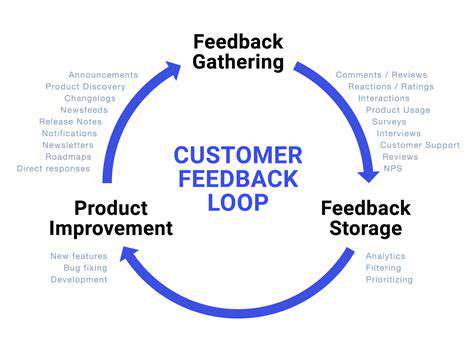
Addressing Challenges and Ensuring Equity
Addressing the Digital Divide
A key challenge in blended learning environments is bridging the digital divide. Students from disadvantaged backgrounds may lack access to reliable internet connectivity, necessary devices, or the digital literacy skills needed to fully participate. This disparity can significantly impact their learning outcomes, creating inequities that must be actively addressed. Schools need to proactively identify and support students facing these barriers, providing equitable access to technology and digital resources.
Strategies to mitigate this include providing internet access points at schools, offering loaner devices, and implementing digital literacy programs tailored to student needs. These initiatives ensure that the digital tools necessary for blended learning are accessible to all students, fostering a more equitable learning experience.
Ensuring Equitable Access to Learning Resources
Beyond technology, ensuring equitable access to learning resources is critical. This encompasses a wide range of materials, including textbooks, supplementary materials, and specialized software. Blended learning often relies on online platforms and digital resources, but these resources may not always be accessible or affordable to all students. Schools must consider the diverse needs of their student population and provide a range of options to ensure that all students have access to the materials needed for success.
Facilitating Inclusive and Supportive Learning Environments
Blended learning environments can be highly effective, but only if they foster inclusivity and support. Creating a culture of respect, understanding, and collaboration is essential. This includes strategies for accommodating diverse learning styles, providing individualized support for struggling students, and fostering a sense of belonging for all learners. Educators must be trained to effectively engage with students in blended learning settings, tailoring their instruction to meet diverse needs and promoting a positive and supportive classroom atmosphere.
Adapting Instruction for Diverse Learning Styles
Blended learning offers the potential to adapt instruction to meet the unique needs of diverse learners. However, educators need to be equipped with the knowledge and strategies to effectively differentiate instruction in these environments. This includes understanding different learning styles (visual, auditory, kinesthetic) and tailoring activities and assessments to accommodate them. Providing options for student engagement, such as choice in learning activities or varied modes of assessment, can significantly enhance the learning experience for all students.
Assessing Learning Outcomes in a Blended Environment
Evaluating learning outcomes in blended learning environments requires careful consideration. Traditional assessment methods might not fully capture the knowledge and skills acquired through a blended approach. Educators must develop assessments that align with learning objectives and accurately reflect student understanding. This includes incorporating a variety of assessment types, such as online quizzes, projects, presentations, and collaborative activities. Regular feedback and formative assessments play a crucial role in providing students with insights into their progress and allowing educators to adjust their teaching strategies as needed.
Addressing Potential Challenges in Implementation
Implementing blended learning effectively requires careful planning and execution. Potential challenges include technical issues, training needs for educators, and ensuring adequate support for students. Addressing these issues proactively through comprehensive training, readily available technical support, and clear communication can minimize disruptions and ensure a smooth transition to blended learning. Developing a robust support system that addresses the specific needs of students and teachers is critical for the success of a blended learning program.
Read more about Assessing Learning Outcomes in Blended Environments
Hot Recommendations
- Attribution Modeling in Google Analytics: Credit Where It's Due
- Understanding Statistical Significance in A/B Testing
- Future Proofing Your Brand in the Digital Landscape
- Measuring CTV Ad Performance: Key Metrics
- Negative Keywords: Preventing Wasted Ad Spend
- Building Local Citations: Essential for Local SEO
- Responsive Design for Mobile Devices: A Practical Guide
- Mobile First Web Design: Ensuring a Seamless User Experience
- Understanding Your Competitors' Digital Marketing Strategies
- Google Display Network: Reaching a Broader Audience
